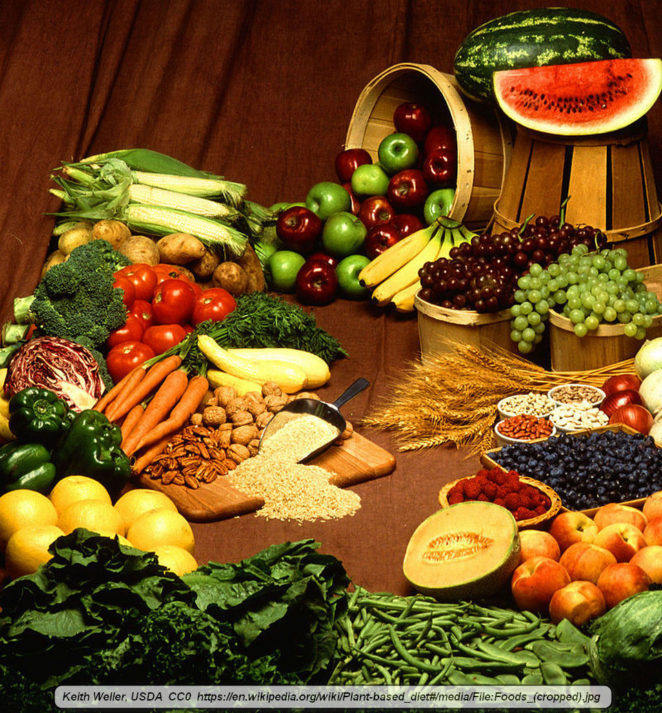
For the most robust garden possible, one of the most important factors is the soil and the depth to which various vegetable and fruit plant roots grow. This is of prime importance for growing fruits and vegetables in containers, but it is also quite important in growing the plants in raised beds or traditional gardens.
Root depths

Different kinds of plants require different amounts of space and depth for their roots. It simply makes sense that deep-rooted plants need to have the soil prepared to a greater depth than shallow-rooted plants.
Plants that are grown in the garden can be separated into shallow, medium, and deep-rooting plants. To get the best harvest from the plants, the soil should be prepared to the minimum depth required by the plants.
Note that the keyword is ‘minimum’. To understand the importance of this distinction, carrots are medium-rooted plants. They require a minimum of 18 to 24 inches of depth for proper development. However, the world’s longest carrot measured very close to 20 1/2 feet long. This is over 10 times deeper than the minimum.
The magic six

For most garden plants, it is the top six inches or about 15 centimeters that is the most important, regardless of how deep the roots eventually grow. This is because the bulk of the root system usually happens within that top layer of soil. This means that if you are going to only be able to spend a little time working on the dirt in the garden, the first six inches should get the majority of your attention and effort.
On the other hand, plants that grow to greater depth do need to be able to push their roots through the dirt. If they can’t, the crops will generally not be the best they can be and this is one of the major causes of poor crop production. Raised beds can help tremendously, especially if they are tall beds, but you should still be aware of the minimum depth requirements for the plants.
Common shallow-rooted fruits and vegetables

The majority of the most commonly grown fruits and vegetables are shallow-rooted. By “shallow-rooted”, we are referring to requiring a minimum of a foot to a foot and a half of soil depth. The following are shallow-rooted plants.
- Bok Choy
- Broccoli
- Brussels sprouts
- Cabbage
- Cauliflower
- Celery
- Chives
- Corn
- Garlic
- Kohlrabi
- Leek
- Lettuce
- Onions
- Potatoes
- Radishes
- Spinach
- Strawberries
Medium-rooted vegetables and fruits
These plants need a little more depth; up to two feet.
- Beans
- Beets
- Cantaloupe
- Carrots
- Chard
- Cucumbers
- Eggplant
- Honeydew melon
- Kale
- Peas
- Peppers
- Rutabagas
- Summer squash
- Turnips
Deep-rooted fruits and vegetables

The plants that are deep-rooted need a minimum of two to three feet of depth. These plants include:
- Artichokes
- Asparagus
- Okra
- Parsnips
- Pumpkins
- Rhubarb
- Sweet Potatoes
- Tomatoes
- Watermelon
- Winter Squash
Container gardening

It should be noted that most fruits and vegetables can be grown in containers or shallow ground. Having the ground depth that the plants really need is for optimal growth. However, the above information is useful for container gardening, too. For instance, lettuce can be grown quite well in a windowbox, if it is cared for properly. However, tomatoes will probably do poorly in a window box. A five-gallon bucket would be more appropriate for tomatoes.
The rule is; use a deeper container that holds more soil for deeper rooted plants. It works the other way, too. Lettuce will grow in a five-gallon bucket but since it is shallow rooted, much of the extra soil won’t be used and will be wasted.
With just this information, you have important information regarding how deep to work the soil for the plants you intend to grow. You also now know that the top six inches are the most important, so if you focus most of your efforts in that layer, the garden will benefit.
With this knowledge, you are on your way to having a superb and productive garden.








That’s great, I need it
Good tips, you must be a great gardener.
I don’t know about ‘great’ or even ‘good’, but I try to be a knowledgeable one. lol
Of course, you won’t give those advices if you have not tried them yet, would you?
The same is true of advice about almost everything else as well.
but you did try these advices?
Yes, I use them frequently, every year.
You must have a wonderful garden by now. Nice.
That’s good information to know!!
I agree, at least if a person is going to grow any sort of a garden.
Great post…that’s good information to know.
It is one of my first and biggest considerations when I start planning and laying out my garden. It even is a major reason that I might put in a raised bed in a specific location rather than tilling and putting in a conventional plot.
Thank you for posting, summer will be here before we know it, this is a good review.
Yes, it will be. I have a number of herbs planted in the house a couple of days ago, and I will be planting more in a few days. I won’t be starting the vegetable seeds for another couple months, though. We get frosts here in the mountains until the last week of May to the first week of June.
I haven’t decided how many plants I grow in pots, either.
You are on top of things!
I try, but I’ll still probably end up buying seedlings, plus the flowers I’ll buy to put in at the church.